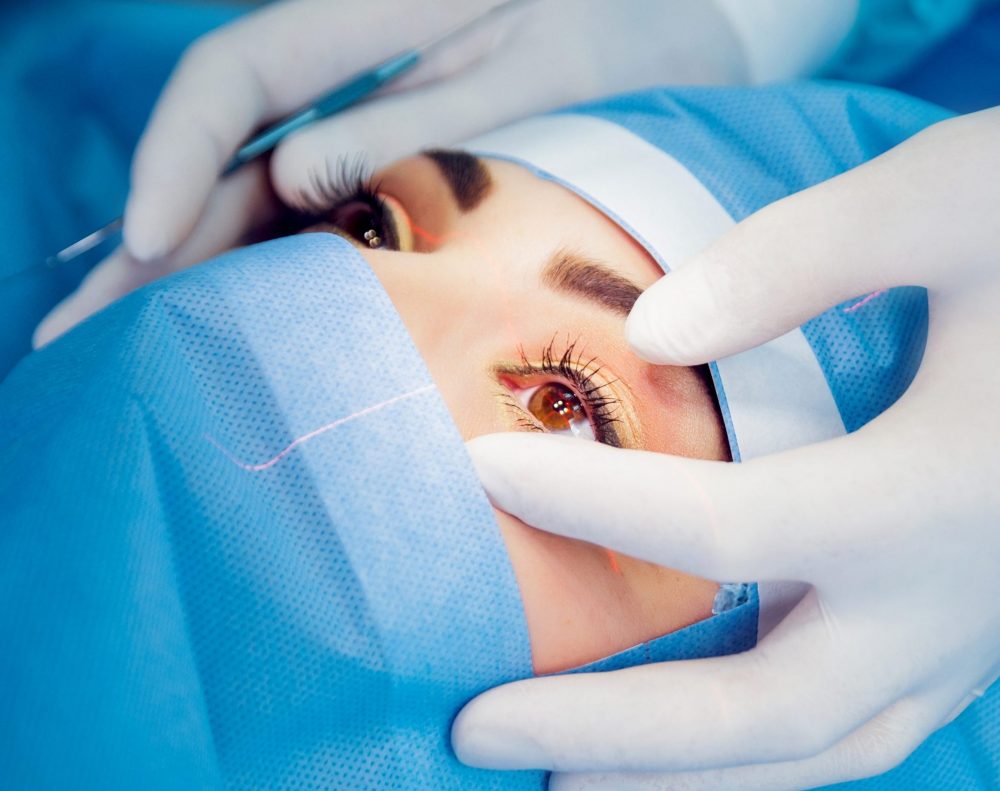Introduction
Cataracts, a clouding of the lens in the eye leading to vision impairment, affect millions of people worldwide. Traditionally, treatment options have centered around surgical intervention or the use of eye drops to manage symptoms. However, recent advancements in medical technology have paved the way for revolutionary approaches to cataract treatment, offering patients new hope and improved outcomes.
Understanding Cataracts
Before delving into innovative treatment methods, it’s essential to grasp the fundamentals of cataracts. A cataract develops when proteins in the lens of the eye clump together, causing cloudiness and interfering with vision. This condition is often age-related but can also result from injury, certain medications, or underlying medical conditions such as diabetes.
- Cataracts: Clouding of the lens, leading to vision impairment.
- Causes: Age-related, injury, medications, or underlying medical conditions.
Cataracts typically progress slowly, gradually worsening vision over time. Common symptoms include blurry vision, increased sensitivity to light, difficulty seeing at night, and seeing halos around lights. As the cataract advances, daily activities like reading, driving, and recognizing faces become challenging, significantly impacting quality of life.
- Symptoms: Blurry vision, sensitivity to light, difficulty seeing at night, halos around lights.
- Impact: Difficulty with daily activities, reduced quality of life.

Conventional Treatment Approaches
Historically, cataract treatment has primarily involved surgical removal of the cloudy lens followed by the implantation of an artificial intraocular lens (IOL). While cataract surgery is highly successful and considered one of the safest and most effective surgical procedures, it still carries risks, including infection, bleeding, and retinal detachment.
- Surgical Removal: High success rate but risks involved.
- Artificial Intraocular Lens: Implanted post-surgery.
In addition to surgery, some patients may opt for the use of eye drops to alleviate symptoms associated with cataracts. These drops typically contain lubricants or medications aimed at reducing inflammation and discomfort. However, while eye drops may provide temporary relief, they do not address the underlying cause of the cataract or prevent its progression.
- Eye Drops: Temporary relief but do not address underlying cause.
The Rise of Innovative Treatments
Recent advancements in medical science have led to the development of innovative treatments that aim to revolutionize cataract care. These cutting-edge approaches offer alternatives to traditional surgery and provide new avenues for improving patient outcomes.
1. Phacoemulsification
Phacoemulsification is a modern surgical technique used to remove cataracts with minimal incisions and rapid recovery times. During the procedure, the cloudy lens is emulsified using ultrasound energy and then aspirated from the eye. This method reduces the need for large incisions, resulting in quicker healing and reduced risk of complications.
2. Femtosecond Laser-Assisted Cataract Surgery (FLACS)
FLACS combines the precision of laser technology with the expertise of skilled surgeons to perform cataract removal with unparalleled accuracy. The femtosecond laser creates precise incisions in the cornea, fragments the cataract with minimal energy, and softens the lens for easier removal. This advanced approach offers enhanced safety, predictability, and visual outcomes compared to traditional surgery.
3. Intraocular Lens Innovations
Advancements in intraocular lens technology have expanded treatment options for patients undergoing cataract surgery. Premium IOLs, such as multifocal and toric lenses, can correct presbyopia and astigmatism simultaneously with cataract removal, reducing dependence on glasses or contact lenses postoperatively. Additionally, adjustable-focus IOLs allow for customized vision correction tailored to individual patient needs.
4. Pharmacological Interventions
Researchers are exploring pharmacological interventions aimed at preventing or delaying cataract formation and progression. These interventions may include the use of antioxidant supplements, anti-inflammatory medications, or gene therapy to target specific pathways involved in cataract development. While still in the experimental stages, pharmacological treatments hold promise for slowing the progression of cataracts and preserving visual function.

Conventional vs. Innovative Treatments
| Treatment Approach | Conventional | Innovative |
|---|---|---|
| Surgical Method | Manual incisions, higher risk of complications | Minimal incisions, reduced risk, faster recovery |
| Intraocular Lens | Standard IOL | Premium IOL options, customized vision correction |
| Additional Treatment Options | Eye drops for symptom management | Pharmacological interventions, targeted therapies |
The Future of Cataract Care
As technology continues to evolve, the future of cataract care holds exciting possibilities for patients and practitioners alike. Emerging therapies and treatment modalities aim to further improve outcomes, enhance patient satisfaction, and expand access to care for individuals with cataracts. Explore More About (Brain Freeze Mystery)
1. Nanotechnology
Nanotechnology holds potential for revolutionizing cataract treatment by delivering drugs directly to the lens, targeting the underlying mechanisms of cataract formation. Nanoparticles loaded with therapeutic agents could penetrate the lens more effectively, providing targeted treatment while minimizing side effects on surrounding ocular tissues.
2. Artificial Intelligence
Artificial intelligence (AI) and machine learning algorithms are increasingly being integrated into diagnostic and surgical platforms for cataract management. These technologies enable more accurate preoperative planning, intraoperative guidance, and postoperative monitoring, resulting in optimized surgical outcomes and enhanced patient safety.
3. Regenerative Medicine
Regenerative medicine approaches, such as stem cell therapy and tissue engineering, hold promise for restoring vision in patients with advanced cataracts. By harnessing the regenerative potential of stem cells, researchers aim to repair damaged lens tissue and restore clarity to the eye, potentially eliminating the need for surgical intervention altogether.
4. Teleophthalmology
Teleophthalmology platforms enable remote diagnosis and monitoring of cataracts, particularly in underserved or rural areas where access to specialized eye care may be limited. Through telemedicine consultations, patients can receive timely evaluation and management recommendations, improving the efficiency and accessibility of cataract care.
Conclusion
In conclusion, the landscape of cataract treatment is undergoing a profound transformation, driven by technological innovation and scientific advancement. From minimally invasive surgical techniques to groundbreaking therapies, the future holds immense promise for individuals affected by cataracts. By embracing these innovative approaches, we can revolutionize cataract care, improving outcomes and enhancing quality of life for patients around the globe.




